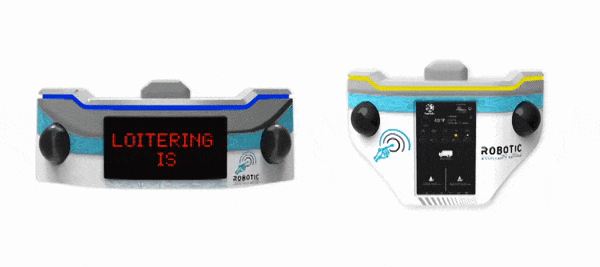How does an autonomous robot differ from a plain-old-vanilla robot? It’s complicated.
Ask twenty random people what a robot is and you’ll get twenty very different answers. Push each of them to explain their definition – like where “machine” ends and “robot” begins – and the conversation gets quite interesting.
The majority of respondents (engineers excluded!) will initially tell you that robots look like humans or “creatures.” A quick discussion about Roomba vacuum cleaners will usually dispel that fallacy.
Ultimately, most come to the conclusion that robots share three common characteristics.
- They sense and respond to their environment
- Based on what they sense, robots have some level of decision-making and predicable reaction ability
- They move – either from place-to-place, parts of their body, or both
Hmmm. When you put these all together, they sound a lot like the definition of “autonomous.” We’re describing a machine with some level of self-direction with the ability to act independently free from external control.
The truth is that there is no clear-cut dichotomy between robots that are “autonomous” and those that aren’t. By definition, all robots have some level of autonomy, but certain robots have way, way, way more autonomy than others. Think of it as a sliding scale, with “1” being a mechanical arm in an auto assembly line. It can do little more than respond to the vehicle’s presence in front of it. “10” is The Terminator, which is probably not an ideal to which we want to aspire.
Whether or not we label a robot “autonomous” is really a subjective call. How much autonomy makes it autonomous? In other words, assuming the robot is meant to perform a job or task traditionally performed by humans, what percentage must the robot handle without their assistance?
Today, all robots require at least some human direction or programming. Even the Perseverance Rover, which we can all agree is highly autonomous given its ability to drive, fly, and explore Mars on its own, receives instructions from humans about where to go.
The terms “autonomous” and “semi-autonomous” are frequently used to describe the robotic solutions now available to support physical security operations. Within this market context, what do these terms mean?
Robots are really good at performing certain types of jobs. Routine, redundant, mundane tasks that are boring for humans are perfect for robots. Thanks to advances in AI and location sensing-technologies like GPS and lidar, robots can patrol pre-programmed routes while their cameras and other environmental sensors search for anomalies. In this sense, security robots are autonomous.
However, when robots perceive an event that requires (or may require) a response, security is best served with human involvement. We want human operators to interpret what the robot has observed and direct the appropriate actions. That may mean issuing an audio warning from the robot, controlling it off-route as it investigates further, or summoning human officers to the site. We certainly don’t want robots chasing down criminals or brandishing weapons! For these tasks, security robots are not autonomous. Humans are making the decisions.
The same distinctions are valid when security robots are used for customer support and concierge services. If a person approaches a robotic device and needs assistance, there are particular requests the robot can handle autonomously. For example, if integrated with a voice-intelligence application, the robot could answer basic questions like “where is the nearest bathroom?”
Ding. Autonomous.
But suppose the person hits the robot’s emergency button to report that their friend is having a heart attack or that their car has been stolen. In those cases, they need to speak with a real human ASAP. At that point, the robot can facilitate a live 2-way video call with a trained security officer who can initiate sending on-site resources while providing emotional support until help arrives.
Not Autonomous.
Where do security robots fall on the autonomy continuum? If you focus on some aspects of their job, they are truly autonomous, way up there on the “1-to-10” scale. But if you average together how they deliver value as part of a comprehensive security operation, combining the things they can do on their own along with the things they help humans manage, “semi-autonomous” is probably the better term.
So back to our original question, “How does an autonomous robot differ from a plain-old vanilla robot?”
It’s all relative. Even plain-old-vanilla robots are autonomous in their own way. For today’s security applications, customers are best served by a level of autonomy more akin to a hot fudge sundae with sprinkles and a cherry on top.

